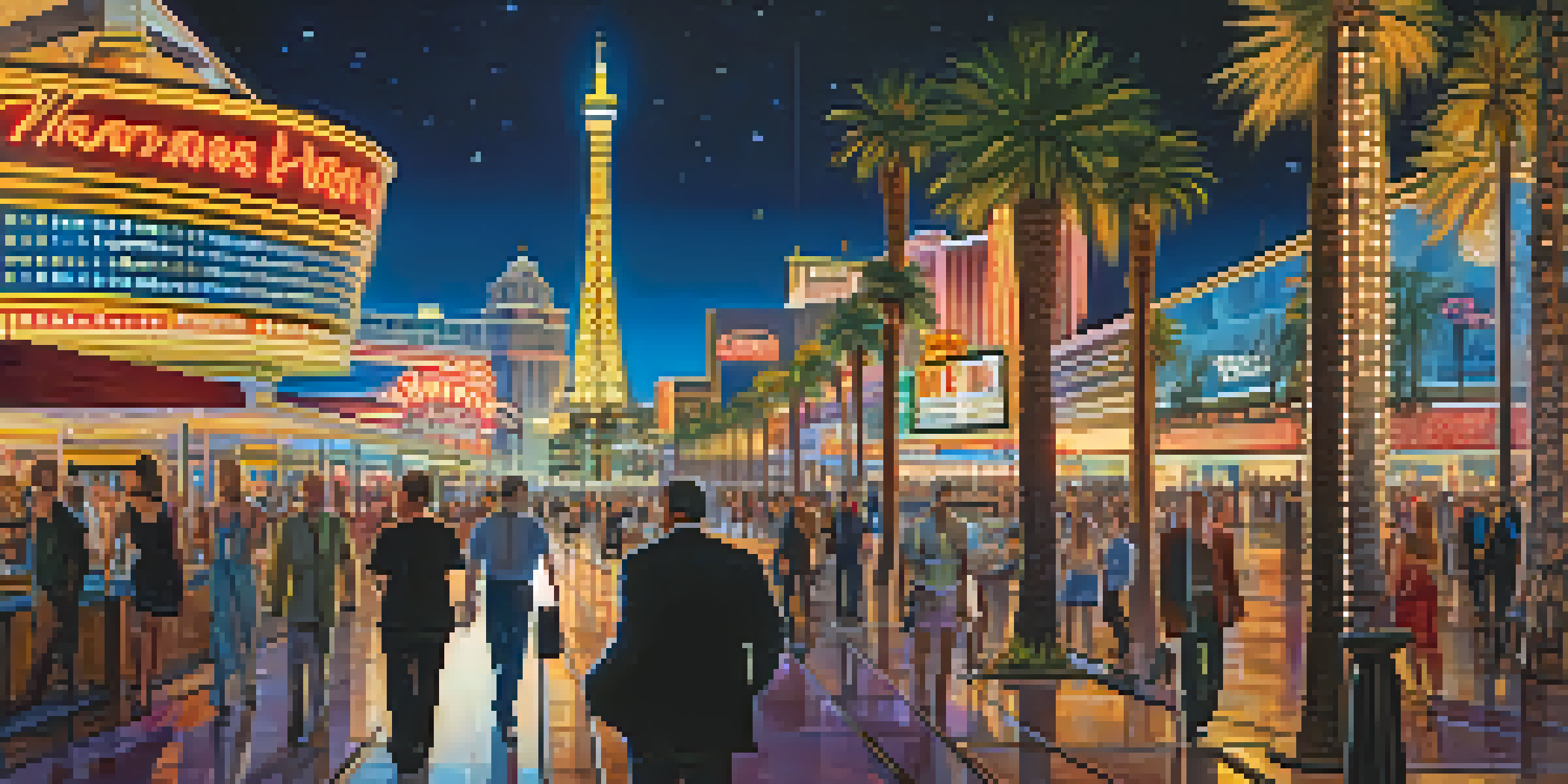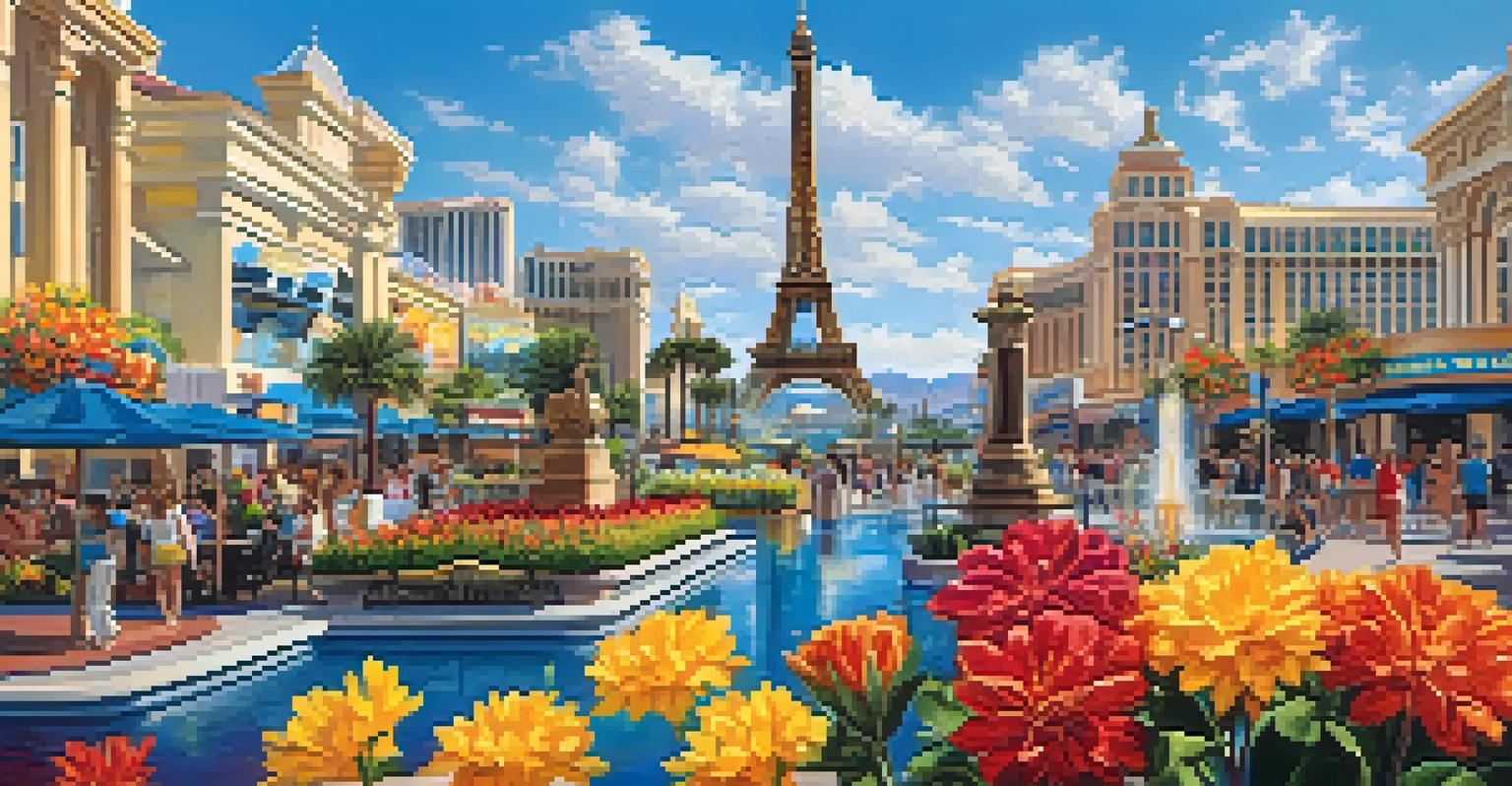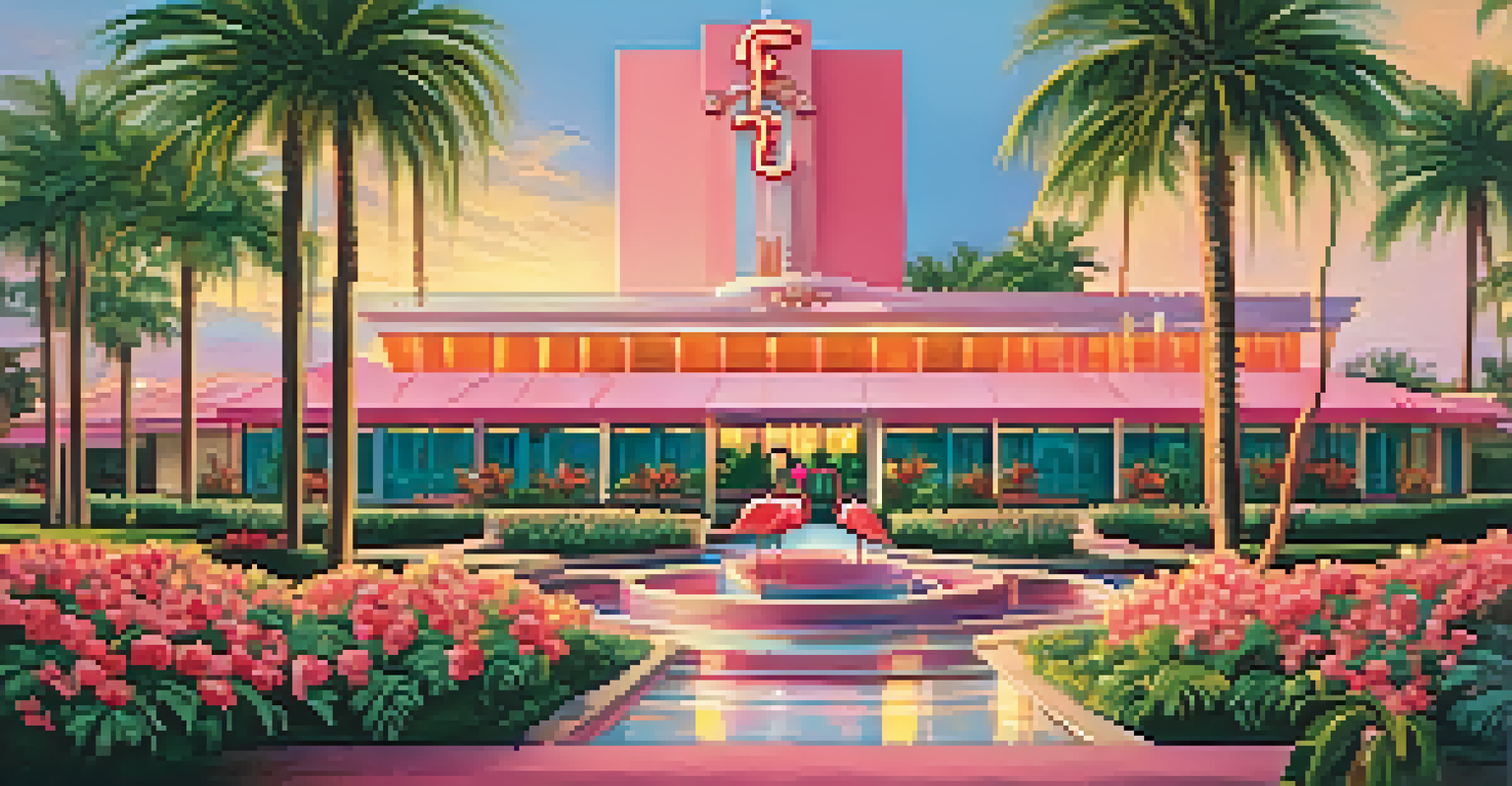The Birth of the Las Vegas Strip: A Cultural Revolution

How the Las Vegas Strip Came to Be
The Las Vegas Strip, often considered the entertainment capital of the world, began as a desolate stretch of road in the 1940s. Originally part of U.S. Route 91, it was a simple highway lined with motels and diners. However, the arrival of the first major hotel, the Flamingo, in 1946 marked a turning point, setting the stage for what would become a dazzling destination.
What happens in Vegas, stays in Vegas.
The Flamingo, built by mobster Bugsy Siegel, was not just a hotel; it was a bold statement. With its luxurious amenities and vibrant nightlife, it attracted visitors from all over. This initial success sparked a hotel boom, igniting the imagination of entrepreneurs eager to capitalize on the emerging tourist market.
As more hotels sprang up, each with its unique flair, the Strip transformed into a cultural melting pot. From the Rat Pack's legendary performances to elaborate shows, the Strip became synonymous with glamour and entertainment, drawing millions to its neon lights and promises of excitement.
The Role of Gambling in the Strip's Evolution
Gambling has always been at the heart of Las Vegas's identity, and the Strip is no exception. The legalization of gambling in Nevada in 1931 laid the groundwork for the future of the Strip. It wasn't just about placing bets; it was about creating an all-encompassing experience that combined gaming, entertainment, and luxury.

As casinos began to flourish, they introduced new concepts like themed resorts and extravagant shows, which attracted a diverse crowd. The introduction of the mega-resort model in the 1990s, with properties like The Bellagio and The Venetian, revolutionized the gaming experience by offering more than just gambling. They became destinations in their own right, featuring fine dining, shopping, and breathtaking attractions.
Birth of the Las Vegas Strip
The Las Vegas Strip evolved from a simple highway in the 1940s to a vibrant entertainment hub, starting with the opening of the Flamingo hotel.
This evolution of gambling into a multifaceted experience played a crucial role in establishing the Strip as a cultural hub. Today, the Las Vegas Strip is a place where people come not only to gamble but also to enjoy world-class entertainment, dine at renowned restaurants, and immerse themselves in a vibrant atmosphere.
Iconic Landmarks That Defined the Strip
The Las Vegas Strip is home to some of the most recognizable landmarks in the world. From the towering Luxor Pyramid to the replica Eiffel Tower at the Paris Las Vegas, each structure tells a story. These landmarks not only serve as attractions but also as symbols of the creativity and ambition that define Las Vegas.
Las Vegas is the only place I know where money really talks—it says, 'Goodbye.'
The Stratosphere, standing at 1,149 feet, is the tallest observation tower in the United States, offering breathtaking views of the city. Meanwhile, the Fountains of Bellagio enchant visitors with their choreographed water displays set to music. Each landmark contributes to the unique charm of the Strip, creating a visual feast that captivates the senses.
These iconic structures have become integral to Las Vegas's identity, drawing tourists who want to experience the magic firsthand. They are not just buildings; they are part of the cultural narrative that makes the Strip a must-visit destination.
The Influence of Entertainment on the Strip
Entertainment is the lifeblood of the Las Vegas Strip, transforming it into a cultural phenomenon. From Elvis Presley's electrifying performances to Cirque du Soleil's breathtaking shows, the Strip has long been a showcase for talent and creativity. The allure of star-studded shows and elaborate productions draws visitors from all walks of life.
The evolution of entertainment on the Strip reflects broader cultural trends. As tastes changed over the decades, so did the performances offered. Today, you can find everything from magic shows to musical residencies, ensuring there's something for everyone to enjoy.
Gambling Transformed into Experience
Legalized gambling paved the way for themed resorts and luxury experiences, turning the Strip into a multifaceted cultural destination.
This dynamic entertainment landscape has played a significant role in shaping the Strip's identity. It’s a place where visitors can escape reality and immerse themselves in a world of wonder and fantasy, reinforcing Las Vegas's reputation as a leader in the entertainment industry.
Cultural Impact of the Las Vegas Strip
The cultural impact of the Las Vegas Strip extends far beyond its borders. It has influenced everything from fashion to film and music, making it a global icon. The imagery of the Strip has been immortalized in countless movies, songs, and television shows, showcasing its allure and mystique.
Moreover, the Strip has served as a backdrop for significant social changes. It has challenged societal norms and expectations, becoming a place where people can express themselves freely. The vibrant nightlife and diverse events attract a melting pot of cultures, fostering a unique sense of community among visitors.
By embracing this diversity, the Strip has become a symbol of freedom and opportunity. It represents a cultural revolution, where creativity and expression thrive in a space that celebrates individuality and the pursuit of happiness.
The Future of the Las Vegas Strip
As we look to the future, the Las Vegas Strip continues to evolve, adapting to new trends and technologies. With the rise of digital entertainment and immersive experiences, the Strip is poised to redefine what it means to entertain. Innovations such as virtual reality attractions and interactive shows are already making their mark.
Sustainability is also becoming an integral part of the Strip's future. Many resorts are implementing eco-friendly practices, from energy-efficient systems to sustainable dining options. This shift not only reflects a growing awareness of environmental issues but also appeals to a new generation of travelers seeking responsible tourism.
Cultural Icon with Global Influence
The Strip's vibrant nightlife and entertainment have made it a global icon, impacting various aspects of culture and fostering a sense of community.
The future of the Las Vegas Strip is bright, blending tradition with innovation. As it continues to capture the imagination of visitors worldwide, it remains a cultural landmark that celebrates the spirit of adventure and possibility.
Conclusion: The Legacy of the Las Vegas Strip
The legacy of the Las Vegas Strip is one of transformation and cultural significance. From its humble beginnings to its status as a global icon, the Strip has redefined entertainment and hospitality. It is a testament to the power of creativity and ambition, inspiring generations of dreamers and innovators.
As we reflect on the Strip's journey, it's essential to recognize the influence it has had on our culture. It has become a place where people come together to celebrate life's moments, creating memories that last a lifetime. The vibrant atmosphere and diverse offerings ensure that the Strip will continue to captivate future generations.

In essence, the Las Vegas Strip is more than just a destination; it's a cultural revolution that continues to evolve. Its story is one of resilience, creativity, and the relentless pursuit of the extraordinary, making it a timeless emblem of the American spirit.